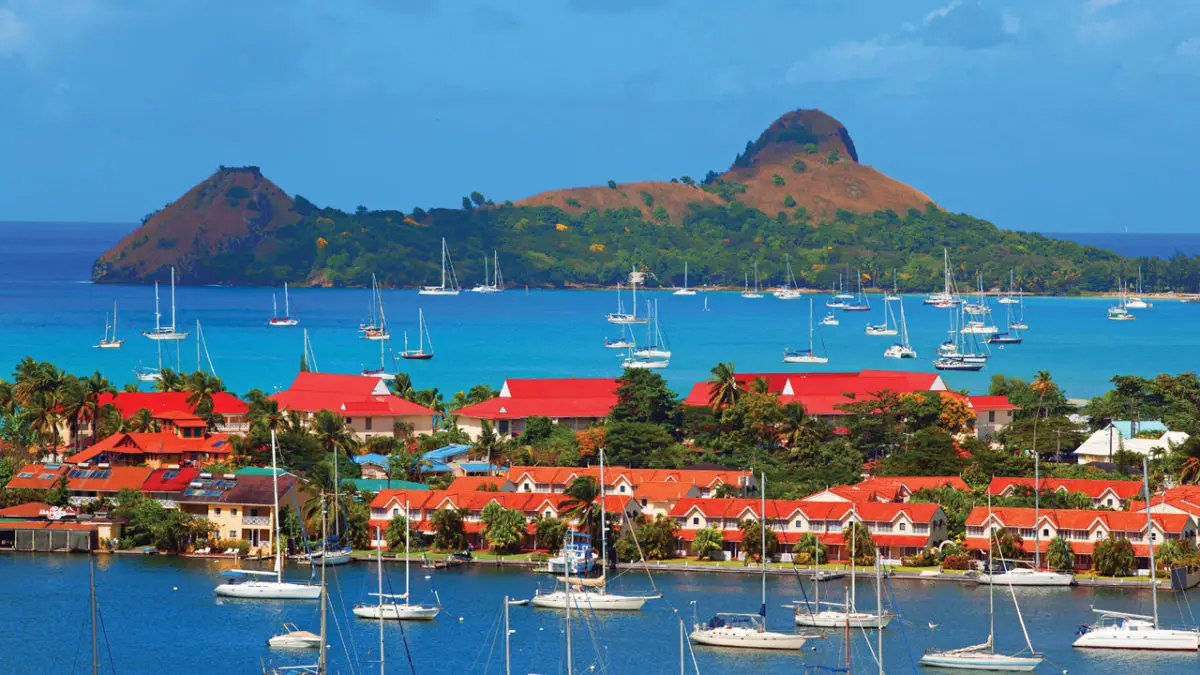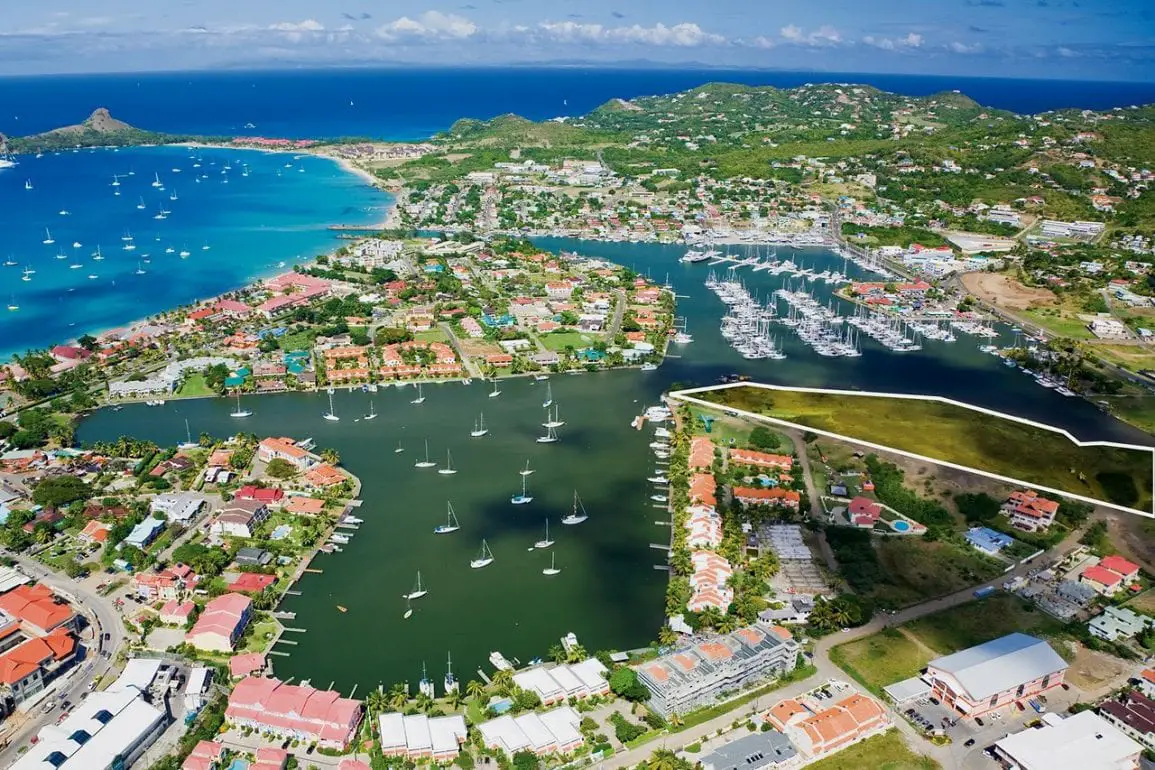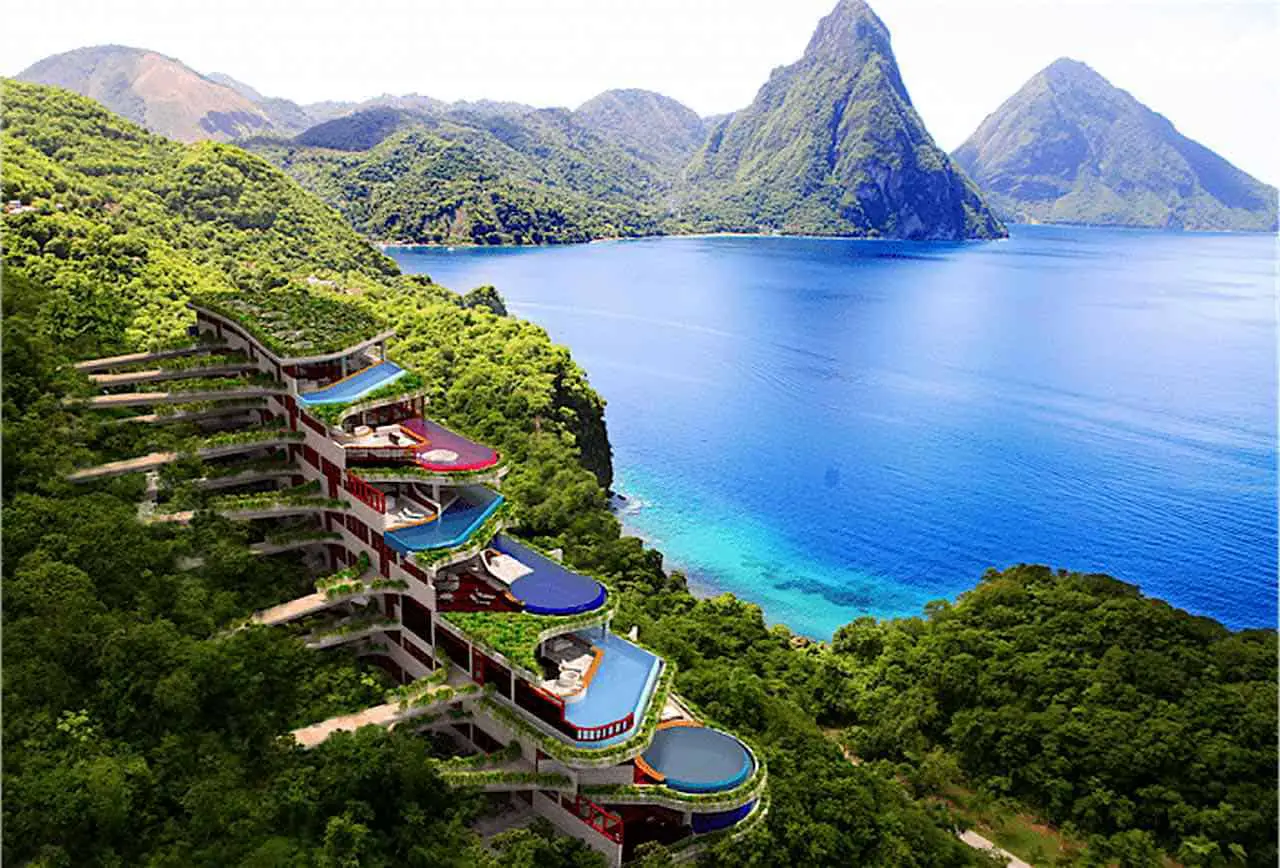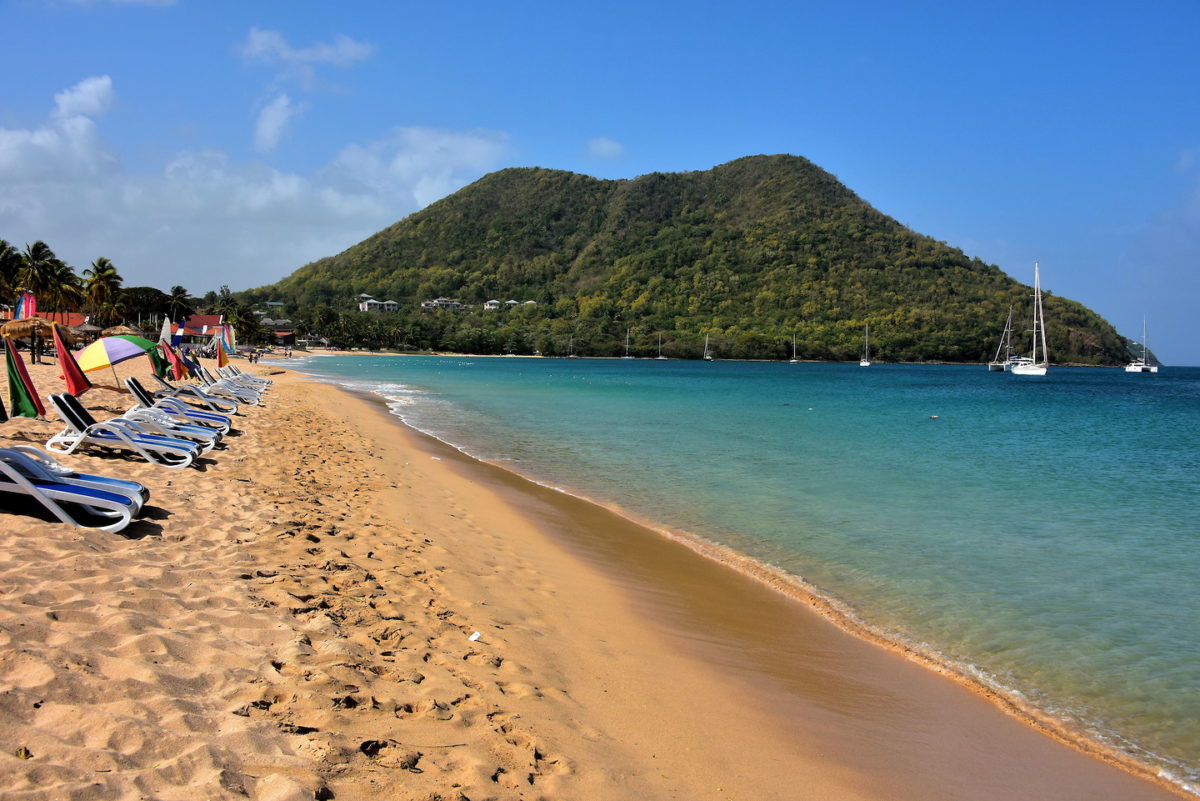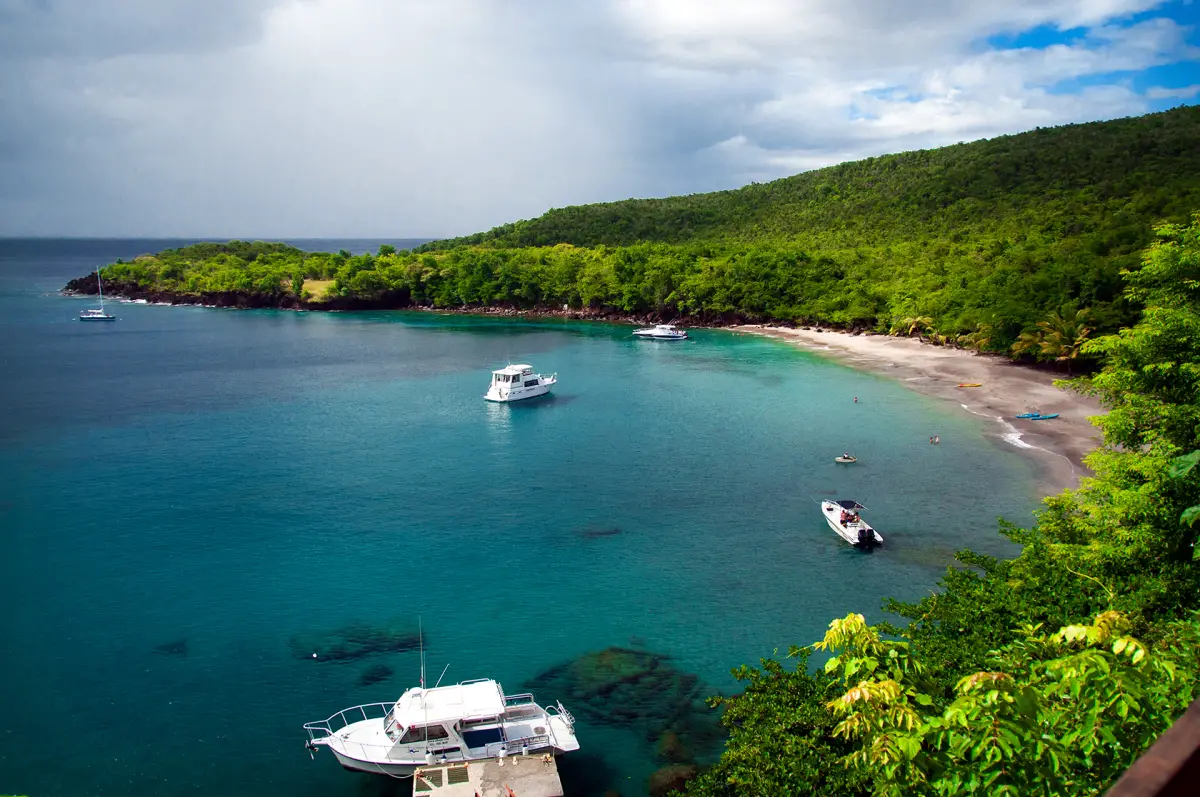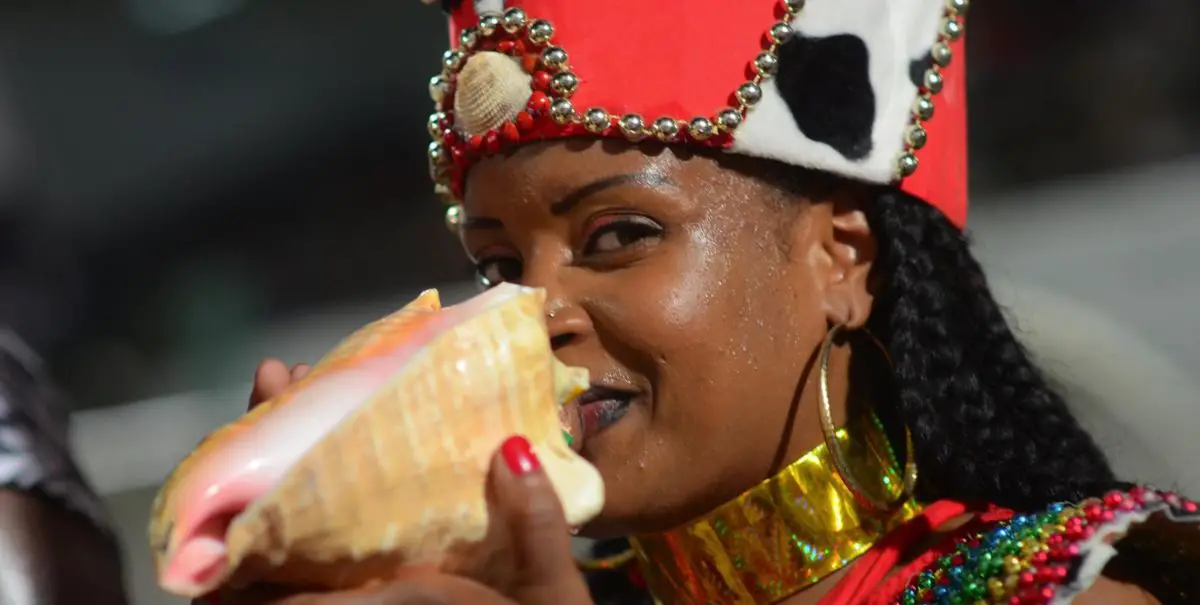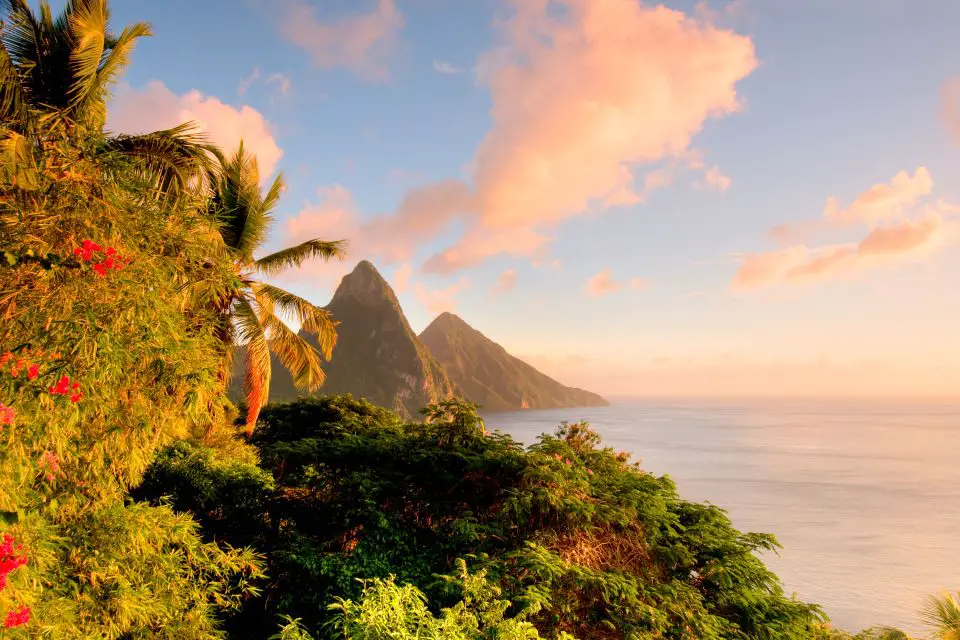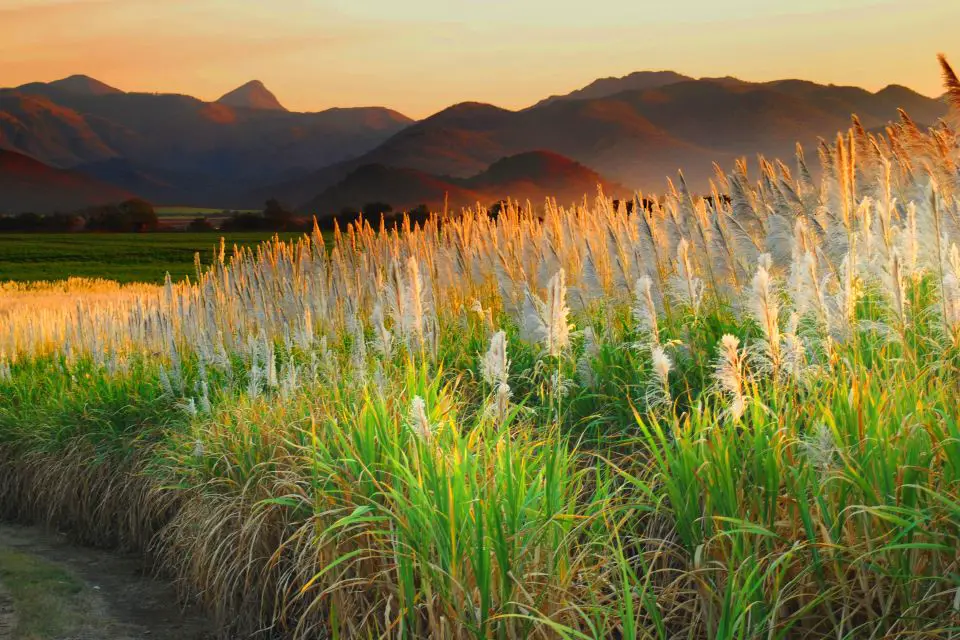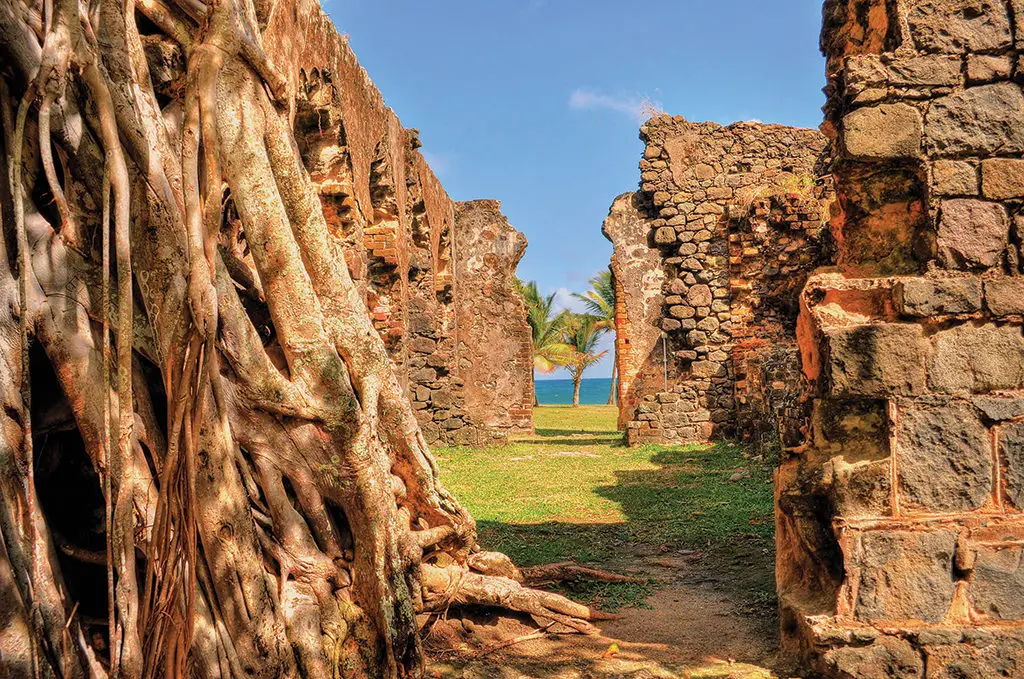We invite you to get to know Saint Lucia, a small independent state known for its beautiful beaches, but you will be amazed by all that Saint Lucia has to offer, so we invite you to discover all about its history, its climate, its festivals and much more here.
Indice De Contenido
Where is the island of Saint Lucia?
Saint Lucia is an island state in the Caribbean Sea, north of Saint Vincent and the Grenadines and south of Martinique. Saint Lucia is one of the Windward Islands, named after Saint Lucia of Syracuse, a name given by Christopher Columbus because when he discovered the island in the 16th century, it was the day of the patron saint, Saint Lucia of Syracuse.
The Pitons Mountains are one of the island’s most prominent features and a geographical landmark on the island of St Lucia, located in northern Venezuela. St Lucia was a colony of the United Kingdom, which took over from 1663 to 1667, after which the island went through several changes of government during the war period.
In 1814, the British finally took control of St Lucia, and in 1979 it became an independent Commonwealth state associated with the United Kingdom. Since then, St Lucia has celebrated its independence and it is a public holiday on the island. St Lucia is currently a member of the Caribbean Community, the Organisation of American States and the Commonwealth of Nations.
Why visit this island?
There are countless reasons why you should visit St Lucia, an island full of culture and influences that are the result of migration and colonisation, making the culture of St Lucia one of the reasons to visit this wonderful place in the Caribbean.
One of the attractions of its culture are the languages that we can know in its inhabitants, although the official language of the island is English, there are other languages such as Kweyol and some Creole languages that are mostly derived from French, such as Creole, making the island of St. Lucia a culturally rich place.
The cultural festivals of the island of Saint Lucia is another reason to visit this beautiful place, the Festival of the Rose and the Marguerite, also a carnival is celebrated before Lent, which was changed to the month of July, not to coincide with the carnival of Trinidad and Tobago, which is much bigger than that of the island of Saint Lucia and of course that affected the concurrence with the carnivals of the island of Saint Lucia, but now it is the opportunity from the year 1. But now since 1999 there is the opportunity to participate in two carnivals and one of them is on St Lucia.
The music and dance of the island’s inhabitants is another reason to visit this wonderful place, to enjoy the popular folkloric dance called Quadrille, as well as musical genres such as Soca, Zouk, Kompa and Reggae, make St. Lucia a place to have fun and fill you with energy.
For those who don’t like Caribbean music, there is an international jazz festival in May. The island’s cuisine is truly exquisite. If you want to sample the world’s richest array of fish and spices in one place, you have to visit St Lucia.
And after enjoying its people, its languages, its historical sites, its music, its dances, its festivals and its food, we can talk about its incredible and paradisiacal beaches. We could not begin with the usual or the obvious, because then everything wonderful about the island would be overshadowed by the beauty of its beaches.
5 of the best beaches in St Lucia
Of course, the beaches are one of the main attractions of Saint Lucia, and while the presence of the Pitons, those imposing mountains found on the island, are a tourist attraction, it is without a doubt the beautiful beaches of the Caribbean island that are the main reason why cruise ships full of tourists choose Saint Lucia as their destination.
The island is only 238 square miles, but it is full of small places where the beautiful white sand, mixed with black or brick coloured, but all bathed by the crystal clear waters of the warm Caribbean Sea. Each of these places is a unique attraction with its own charm.
The best thing about St Lucia is that all of its beaches are open to the public. Its white sand mixed with black volcanic sand, its crystal clear waters and its coral reefs are an offer that cannot be refused. The island of St Lucia is a true paradise for sun, sand and water sports enthusiasts. Here are the five best beaches to visit in St Lucia.
Reduit Beach
Reduit Beach is one of the most popular beaches on the island of St. Lucia, if you are the type of person who does not mind being around a lot of people, then visit Reduit Beach, it is really worth it, it is a beautiful beach but it is always very crowded with tourists as it is one of the ports of choice for cruise ships.
The beach has a good stretch of soft sand and is one of the beaches on the island that is equipped to cater for tourists. You will find all kinds of water sports on offer, as well as restaurants and bars. If you’ve chosen to go to Reduit beach but find it crowded and want a bit of peace and quiet, the southern end of the beach is usually a bit quieter.
Anse Cochon
After Reduit Beach, Anse Cochon Beach is a mixture of black and white volcanic sand which is one of the attractions of Anse Cochon and the location of the beach is truly amazing as it is surrounded by truly breathtaking vegetation which makes the place so special that it can really leave you mesmerised.
It is an incredible beach that is also ideal for scuba diving, its waters are calm, so if you are not a professional of the sport, it is still a safe and good place to practice. If you are one of those who like to enjoy the sun and a relaxing swim, Anse Cochon beach is definitely an excellent choice, you can float in its crystal clear waters and contemplate the rainforest and palm trees that surround the beach.
Anse Chastanet
Anse Chastanet beach is located in the southwest of the island and is a special area for diving because it has a significant drop-off and a coral reef. This also makes it suitable for snorkelling. If you prefer to stay on the beach, there are two resorts nearby.
The good thing about the beaches of the islands of Saint Lucia, especially the most popular ones, is that you can find facilities for the water sports of your choice, but if you prefer to stay on the sand, this is also a fabulous option, as the beach of Anse Chastanet, has a lush and luxuriant vegetation, which makes the place, truly special and relaxing.
Pigeon Island
This place will surprise you because it’s not really an island, it’s two sandbars that extend from the northwest tip of St. Lucia to the area called Pigeon Island Beach, which is formed by two strips of sand within the Pigeon Island National Park, which is a protected area. So you will have the opportunity to do a variety of activities.
It is an area where you can sunbathe and swim in calm waters, where you can also enjoy the wildlife and visit Fort Rodney, from where you have the best panoramic views of the island. You can’t get off the boat without taking the best photos of the trip.
The TOC
You will certainly be surprised by the beach of La Toc, located very close to the city, and although you might not think it is a beautiful quiet beach, it is characterised by being an extensive beach located in the west of the island, with a coast of vegetation, its waters are not as calm as the other beaches and perhaps for this reason it is not as attractive to visitors, despite this it is a recommendable beach.
If you are feeling a little intimidated by the wild waters of the beach, we would like to inform you that there is a resort on the premises which has designated staff to warn of any danger, in which case they will raise a red or yellow flag as a warning sign.
St Lucia Island Festivals
St Lucia is a lively island full of celebrations and cultural festivals, most notably the La Rose and La Marguerite festivals. These festivals are held annually and are organised by historical cultural societies to which most of the island’s inhabitants belong.
The curious thing is that they are two rival foundations. Both festivals, which are a showcase of the island’s cultural wealth, reflect a historical rivalry between communities whose members sing the virtues of their flowers.
Members of La Rose pledge allegiance to the rose by dressing in red and creating extravagant displays of roses. Members of the Daisy, on the other hand, swear allegiance to the daisy and also create allegories and exhibitions in which the flower they defend is the protagonist.
The Climate
The island of Saint Lucia has a tropical climate with an average annual temperature of 27°C. Average annual rainfall ranges from 1300mm in the coastal areas to over 1600mm in the mountainous areas of the island. The rainy season runs from May to August, beginning in May and ending in August.
St Lucia is not exempt from hurricanes, but compared to neighbouring islands such as the US Virgin Islands, St Lucia is much less affected by hurricanes.
Flora and Fauna
St. Lucia is an island of volcanic origin, in it we can find a series of geomorphological formations which are determined by its origin, so we can find the coasts, mountainous landscape in which tropical vegetation is established, there are also areas of plains.
Each of these forms an ecosystem in which a wide variety of flora and fauna develops and establishes itself, with certain endemic species, i.e. those that can only be found on the island of Saint Lucia. In terms of vegetation, more than 800 species of plants have been identified and more than 150 species of birds associated with the plant formations. Some 27 bird species have been identified in the Pitons, five of which are endemic.
Three species of native rodents have also been identified, as well as opossums, bats, reptiles and amphibians, it is an area full of life. The marine fauna is also very diverse, the presence of coral reefs provides the necessary food and shelter for the development of a great variety of tropical fish, which give a beautiful colour and life to these beautiful habitats.
In slightly deeper waters, large marine mammals such as sperm whales can be seen, more than 20 species of whales have been identified, including humpback and pilot whales, and among the smaller mammals, friendly dolphins can also be seen.
Some of St Lucia’s beaches serve as nesting grounds for sea turtles, one of the species listed as endangered. Large predators such as sharks are also present in St Lucia’s waters.
History, its volcanic origins
St Lucia is of volcanic origin, as evidenced by the famous Pitons Mountains, which are two eroded volcanic cones connected by a ridge called Piton Mitan. It is a composite volcano, formed by an energy field that renews itself and allows the presence of fumaroles and hot springs. It has been declared a World Heritage Site by UNESCO.
But beyond its volcanic origins, the island of San Lucia has a history of war and colonisation. As we have already mentioned, the island lies to the north of Venezuela and the first settlers to arrive on the island in the 3rd century were the Taino aborigines, who were later dominated and absorbed by the Carib Indians.
Christopher Columbus arrived on the island on 13 December 1502 and named it after Saint Lucy of Syracuse, who was venerated at the time. With the arrival of the European conquistadors in the 16th century, the indigenous population was decimated after several turf wars and diseases brought by the European conquerors who gained control.
This was followed by successive battles for control of the island between the French and the British. As they fought for control, the government changed hands 14 times, alternating between the French and the British, until 1814, when the British finally gained control of the territory.
They were under British control until 1885, but the people of Saint Lucia began to seek their own representation, and in 1924 they were able to elect their own representatives. By 1951, they had gained adult suffrage and were able to sign a treaty of free association with the United Kingdom, before finally gaining independence in 1979.
As we can see in the article, the island of Saint Lucia is a place that offers many alternatives and natural beauties that are an invitation that cannot be refused, an island full of history, friendly people ready to make us spend the best moments because they are proud of their history, their traditions and all the natural beauties that their island has to offer.
If you liked this article, we invite you to continue reading by clicking on the links below:
- Marquesas Islands
- Ko Samui Island
- Mauritius Island

